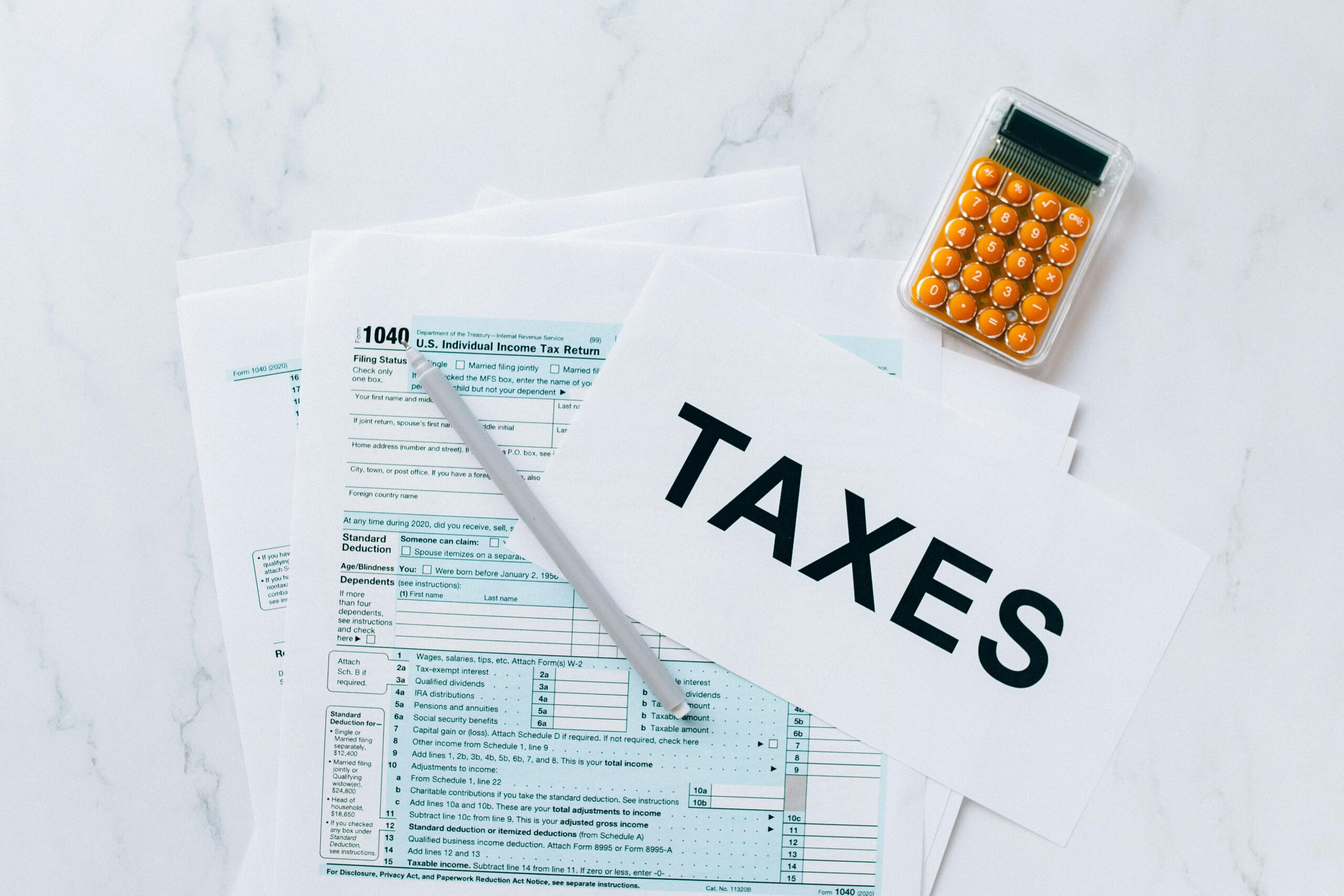Value Added Tax (VAT) is a consumption tax applied to most goods and services in the United Kingdom. Businesses that meet specific turnover thresholds must register for VAT and file regular VAT returns with His Majesty’s Revenue and Customs (HMRC). These returns summarize the VAT charged on sales (output VAT) and the VAT paid on purchases (input VAT), determining whether a business owes money to HMRC or is eligible for a refund.
What is a VAT Return in the UK?
A VAT return is a financial report submitted by VAT-registered businesses to HMRC. It includes:
- Total sales and purchases during the accounting period.
- Output tax (VAT charged on sales).
- Input tax (VAT paid on purchases).
The difference between output tax and input tax determines whether your business owes VAT or qualifies for a refund. If output tax exceeds input tax, you must pay the difference to HMRC. Conversely, if input tax exceeds output tax, you can claim a refund.
VAT returns are typically filed quarterly but may also be submitted monthly or annually under specific schemes. Filing accurate returns is essential as errors can lead to penalties or audits by HMRC.
Current VAT Rates in the UK
The UK has three main VAT rates:
- Standard Rate (20%)
The standard rate applies to most goods and services sold within the UK, such as:
- Electronics
- Clothing
- Professional services
- Restaurant meals
- Reduced Rate (5%)
The reduced rate applies to certain goods and services considered essential or socially beneficial, including:
- Domestic energy supplies (e.g., gas and electricity)
- Children’s car seats
- Energy-saving materials like insulation
- Zero Rate (0%)
Zero-rated goods and services are taxable but at a 0% rate, meaning businesses do not charge VAT but can reclaim input tax on related expenses. Examples include:
- Most food items (excluding luxury foods like chocolates)
- Children’s clothing and footwear
- Books, newspapers, and magazines
- Exports outside the UK
Correctly applying these rates is crucial for compliance with HMRC regulations.
Who Needs to Register for VAT in the UK?
VAT registration is mandatory for businesses whose taxable turnover exceeds £85,000 within any 12-month rolling period.
Thresholds for Registration
- Mandatory Registration: Businesses must register if their taxable turnover exceeds £85,000 annually.
- Voluntary Registration: Businesses below this threshold may choose to register voluntarily if they wish to reclaim input tax or enhance credibility with customers.
Types of Businesses That Must Register
Businesses required to register for VAT include:
- Sole traders
- Partnerships
- Limited companies
- Charities engaging in taxable activities
- Foreign companies operating within the UK
How Often Must VAT Returns Be Filed in the UK?
VAT returns are generally filed quarterly, covering three months of business activity at a time. However, alternative filing frequencies are available depending on specific schemes:
- Monthly Filing
Businesses that regularly receive refunds from HMRC may opt for monthly filing to improve cash flow by reclaiming input tax more frequently.
- Annual Accounting Scheme
Under this scheme, businesses file one annual return instead of quarterly returns, but make interim payments throughout the year based on estimated liability.
- Flat Rate Scheme
Small businesses with an annual turnover below £150,000 can use this simplified scheme where they pay a fixed percentage of their turnover as VAT instead of calculating input/output tax separately.
VAT Return Deadlines in the UK
The deadline for submitting your VAT return and paying any owed amount is typically one calendar month and seven days after the end of your accounting period.
Example Deadlines:
If your accounting period ends on March 31st:
- Your return must be submitted by May 7th.
Key Points About Deadlines:
- Payments must also be made by this deadline unless you have set up a Direct Debit arrangement with HMRC.
- Late submissions or payments may result in penalties under HMRC’s surcharge regime.
- Businesses using the Payments on Account (POA) regime must submit their returns by the last day of the month following their accounting period without any extension.
How to File VAT Returns in the UK
Filing VAT returns has become streamlined thanks to HMRC’s Making Tax Digital (MTD) initiative, which requires most businesses to submit returns digitally using compatible software.
Step-by-Step Process:
- Register for MTD: Create an account through HMRC’s Government Gateway portal if you haven’t already done so.
- Use Compatible Software: MTD requires businesses to use approved accounting software or bridging software compatible with HMRC’s system.
- Prepare Your Return: Input sales and purchase data into your software.
- Submit Electronically: Send your return directly from your software to HMRC.
- Pay Any Owed Amounts: Ensure payment is made by the deadline via bank transfer or Direct Debit.
VAT Invoicing Requirements in the UK
When issuing invoices as a VAT-registered business, certain details must be included:
Mandatory Invoice Information:
- Business name and address
- Customer name and address
- Unique invoice number
- Invoice date
- Description of goods/services provided
- Quantity of goods/services sold
- Unit price excluding VAT
- Total amount excluding VAT
- Applicable VAT rate(s)
- Total amount including VAT
- Your VAT registration number
Failure to include these details can result in non-compliance penalties from HMRC.
What VAT Can Businesses Deduct in the UK?
Businesses can reclaim input VAT on purchases made exclusively for business purposes, provided they have valid invoices or receipts as evidence.
Common Deductible Expenses Include:
- Office supplies (e.g., stationery).
- Equipment purchases (e.g., computers).
- Professional services (e.g., legal fees).
- Travel expenses are directly related to business activities.
However, certain expenses, like entertainment costs, may not qualify for input tax deductions unless explicitly stated by HMRC guidelines.
How to Recover VAT Credits and Refunds in the UK
If your input tax exceeds your output tax during an accounting period, you are entitled to claim a refund from HMRC.
Refund Process:
- Submit your quarterly return showing excess input tax.
- Ensure all supporting documents are accurate and complete.
- Wait for HMRC processing—refunds are typically issued within 10 working days if no errors are found.
Businesses should maintain detailed records, as refunds may be delayed if discrepancies arise during audits.
VAT on Imports and Exports in the UK
Post-Brexit changes have significantly impacted how imports/exports are treated for VAT purposes:
Imports:
Businesses importing goods into the UK must use postponed VAT accounting (PVA). PVA allows importers to declare import VAT on their next return rather than paying it upfront at customs.
Exports:
Exports outside of the UK are zero-rated provided documentation proves goods have left British territory within specified timelines.
Reverse Charge Mechanism for VAT in the UK
The reverse charge mechanism is a VAT accounting procedure that shifts the responsibility for reporting VAT from the supplier to the customer. This is commonly used in specific scenarios, such as construction services under domestic reverse charge rules or cross-border transactions involving EU suppliers under the Northern Ireland Protocol.
How it works
- The supplier issues an invoice without charging VAT.
- The customer accounts for both the input and output VAT on their VAT return.
- This mechanism helps reduce VAT fraud risks and ensures compliance with HMRC regulations.
Businesses must carefully follow these rules to avoid errors in their VAT returns, which could lead to penalties or audits.
Digital Services and VAT Obligations in the UK
Businesses selling digital products or services, such as e-books, software, or online courses, must comply with specific VAT rules. These rules differ depending on whether sales are made to consumers within Northern Ireland, EU member states, or non-EU countries.
Key Requirements
- VAT MOSS (Mini One Stop Shop): Businesses selling digital services to EU consumers must register under MOSS to simplify VAT reporting across different jurisdictions.
- Local Rates: Digital services sold to consumers within Northern Ireland or EU territories may be subject to local VAT rates rather than UK rates.
- Record-Keeping: Businesses must maintain detailed transaction records showing customer location verification methods used to apply the correct VAT rate.
Common VAT Compliance Mistakes to Avoid
Avoiding common mistakes can help businesses stay compliant and reduce the risk of penalties:
- Missing Deadlines: Late submissions or payments can result in penalty points and fines under HMRC’s new system.
- Incorrect Calculations: Errors in calculating input/output tax can lead to underpayment or overpayment of VAT.
- Failure to Use MTD-Compatible Software: Businesses failing to comply with Making Tax Digital (MTD) requirements risk penalties and audits.
- Incomplete Invoices: Missing mandatory details on invoices can result in non-compliance with HMRC regulations.
VAT Penalties and Compliance Risks in the UK
Late Submission Penalties
From 1 January 2023, HMRC introduced a points-based penalty system for late VAT returns:
- For each late submission, a penalty point is awarded until the threshold is reached (e.g., 4 points for quarterly returns).
- Once the threshold is reached, a £200 penalty is imposed for every subsequent late submission until compliance resets the points total to zero.
Late Payment Penalties
Late payment penalties are tiered based on how overdue the payment is:
- Up to 15 Days Late: No penalty applies if payment is made within this period.
- 16–30 Days Late: A 2% penalty is charged on the outstanding amount as of day 15.
- 31+ Days Late: A daily penalty accrues at 4% per year on the outstanding amount until payment is made or a payment plan is agreed.
HMRC has implemented a soft landing period until 31 December 2023, during which the first penalties are waived if payments are made within 30 days.
Repayment Interest Scheme
For businesses claiming refunds, HMRC now pays repayment interest instead of a repayment supplement when refunds are delayed. Interest accrues daily at 1% below the Bank of England base rate (minimum 0.5%), ensuring fair compensation for delayed repayments.
Simplify Your VAT Registration and Filing in the UK with Commenda
Navigating VAT compliance can be challenging for businesses of all sizes. Commenda offers tailored solutions for registration, filing, and ongoing compliance with UK VAT regulations. Whether you need help with Making Tax Digital requirements or managing complex international transactions, Commenda’s expertise ensures your business stays compliant while minimizing administrative burdens.
Conclusion
VAT returns are a critical aspect of tax compliance for businesses in the United Kingdom. By understanding VAT rates, registration thresholds, invoicing requirements, and filing deadlines, businesses can ensure smooth operations and avoid penalties.
The transition to Making Tax Digital has streamlined the filing process, making it essential for businesses to adopt compatible software and maintain accurate digital records. Whether dealing with imports, exports, or domestic transactions, staying informed about VAT regulations allows businesses to optimize their tax position while remaining compliant. Proper planning and adherence to HMRC guidelines will help businesses manage their VAT obligations effectively.
FAQs About VAT Returns in the UK
- What is VAT, and why do I need to file VAT returns?
VAT is a consumption tax applied to goods and services in the UK. Filing returns ensures businesses report their sales and purchases accurately and pay or reclaim VAT owed.
- How often do I need to submit my VAT returns?
Most businesses file quarterly returns, but monthly or annual options are available under specific schemes.
- What happens if I miss a deadline?
Late submissions incur penalty points under HMRC’s system, leading to fines once thresholds are reached.
- Can I claim refunds on business expenses?
Yes, businesses can reclaim input tax on purchases made exclusively for business purposes.
- What records do I need to keep for VAT purposes?
Businesses must maintain detailed records of sales, purchases, invoices, and receipts for at least six years.
- Do I need digital tools for filing?
Yes, all filings must comply with Making Tax Digital (MTD) rules using compatible software.











